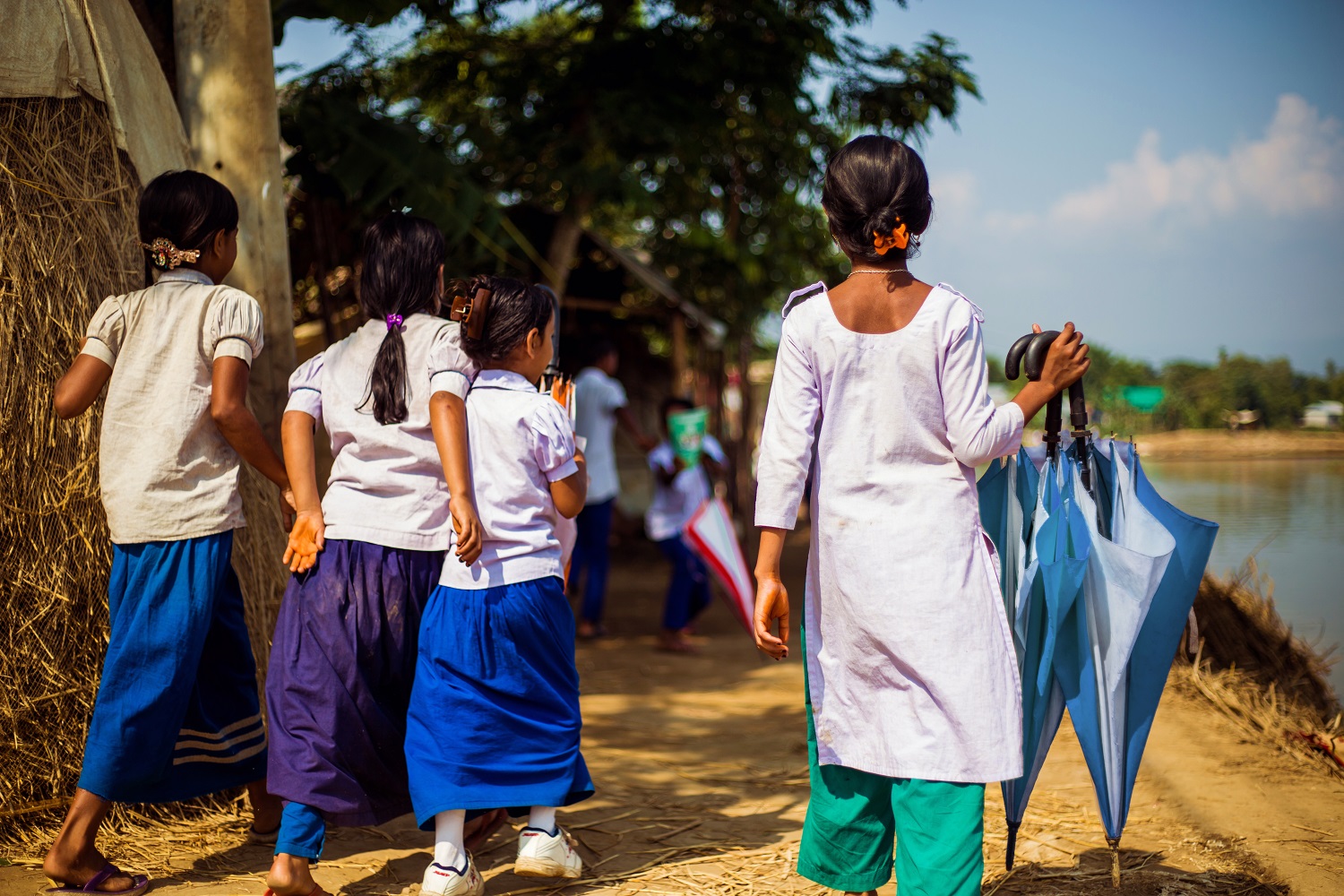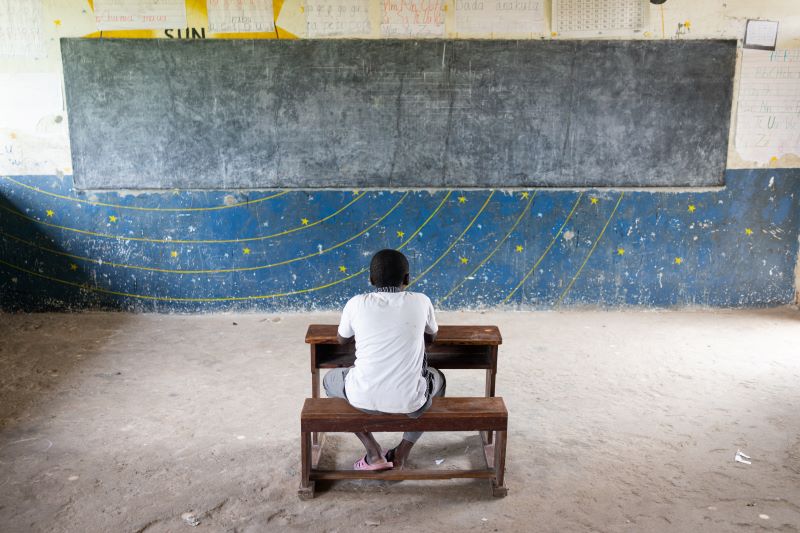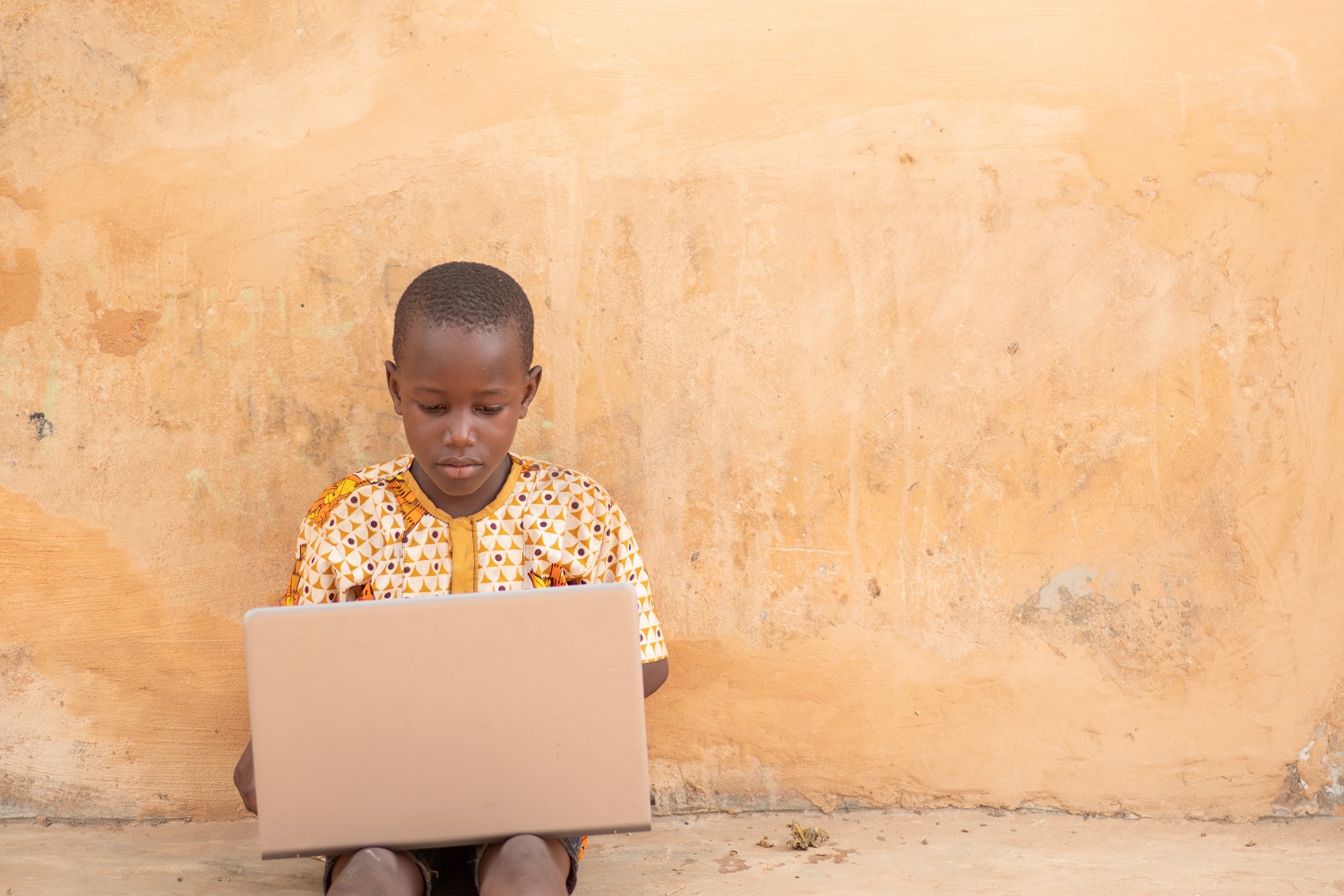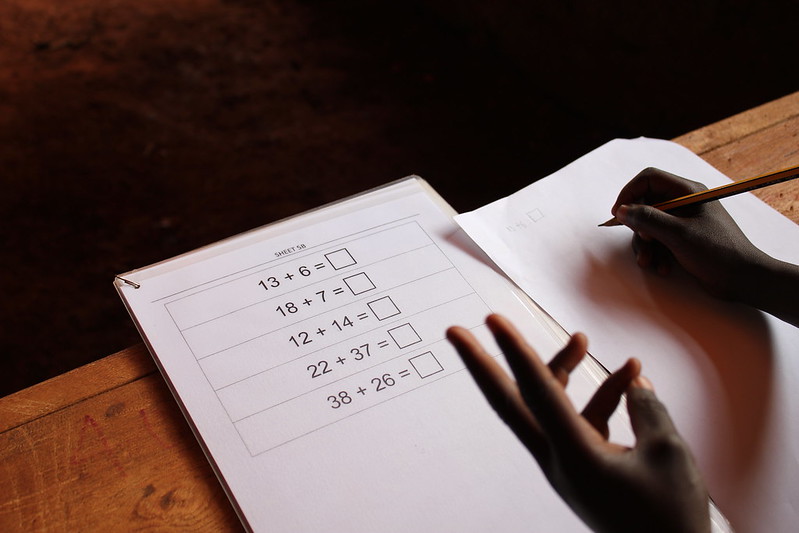In Nairobi—where about 60 percent of the population lives in informal settlements—nearly two thirds of primary-school age children attend non-government schools, with lower income populations served by low-cost private schools (LCPS). Despite Kenya’s Free Primary Education policy, parents often choose LCPS because there aren’t enough public schools nearby; prioritizing convenience over education quality or fee rates.
When the pandemic struck, households faced economic shocks that persisted after schools reopened due to loss of employment. In the wake of this, many LCPS, like many other businesses, struggled to stay afloat, leading to permanent closure of some schools. The risks that parents could no longer afford school fees, and schools would close, threatened to disrupt private school markets and, in turn, to disrupt wider education systems. Reports suggested that private school enrollments in places like Nairobi, where these are high, were likely to decline with some students migrating to public schools (putting a strain on their capacity) and others delaying entry or dropping out altogether.
Under CGD’s PREPARE partnership, new research from the African Population and Health Research Center (APHRC) provides evidence on what the impacts of COVID-19 have been on private school markets that serve low income families. APHRC conducted a survey of 883 households and 471 schools (and an additional 24 schools that shut down during COVID-19 pandemic) in four Nairobi informal settlements between August and October 2021. A simple random technique was applied in selecting households from an existing list of 4,060 eligible households (HHs) that had at least one school-going aged child and all school heads from operational schools in the area were interviewed with a 96.9 percent response rate. The school sample included all private and public schools in the four informal settlements and within a 1 km radius from the boundary of the four sites.
In line with what has been found elsewhere, in Nairobi the total number of children that dropped out when schools reopened was less than was feared, but not insignificant, Dropout rates were highest at the end of primary school, with families citing cost as the main barrier to secondary school enrolment. Most private schools in the city survived, but lost some of their teacher workforce due to not being able to pay their salaries.
An upcoming paper from APHRC shares further evidence of what happened in Nairobi when schools reopened. We share a few highlights here.
COVID-19 took an economic toll on families…
Our survey showed that at least 61 percent of the working-age population in three of the informal settlements—Kibera, Mathare and Viwandani— lost their jobs. In the fourth settlement, Korogocho, where self-employment was relatively high, job loss was 44 percent. More than 96 percent of households in all four informal settlements reported a decrease in income due to the pandemic.
…which led to a shift in demand from private to public schools
A strategy adopted by some households to cope with income loss was to transfer learners from private to public schools, especially for learners in primary schools where government schools do not charge school fees. A quarter of primary school children in the survey changed schools as a result of COVID-19 (Figure 1). Combining primary and secondary levels, 5.5 percent of students from our sample households moved from public to private schools, while 13.4 percent of students moved from private to public schools.
Figure 1. Student movement after school reopening
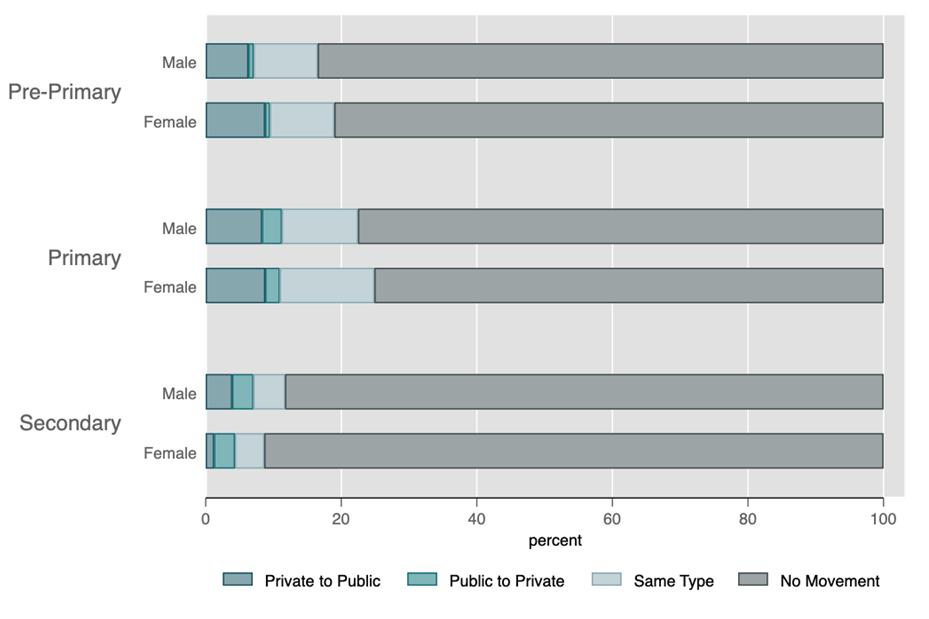
Cost became a bigger factor in selecting schools than it was before the pandemic. Nearly 70 percent of parents perceived that school fees were higher after reopening than before, with around five percent reporting lower fees. These include fees for tuition, transportation, exams, meals, etc, and these costs differ based on the level of school. However, based on school administrators' reports, public schools did not increase fees—which was expected due to government regulations—while around 22 percent of private schools reported charging higher fees at reopening.
The difference between the actual change of fees charged upon reopening of schools and parents' perceptions could be partly explained by additional household expenses while households were experiencing loss of income. For instance, households were expected to provide their children with PPE such as masks to prevent against COVID-19 transmission in schools, which could have made them perceive an increase in educational expenses. Affordability was the major factor that most parents considered in transferring learners to a school that was further away (35 percent), followed by perceptions of the school’s performance (28 percent), and then the school’s facilities (11 percent) (Figure 2).
Figure 2. Reasons for enrolling in a school that is far from home, during COVID-19
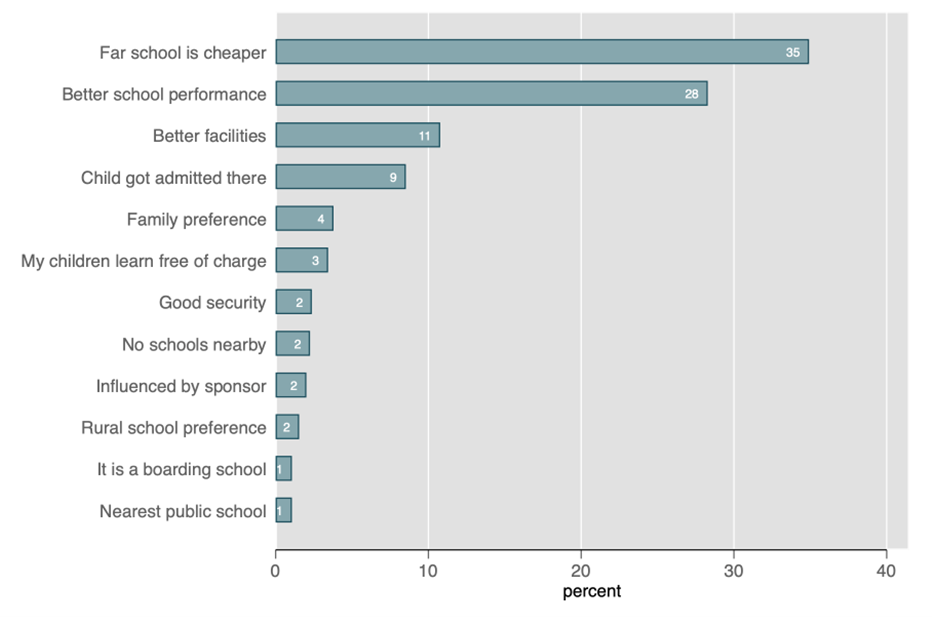
Some learners did not return to school—particularly at the secondary school level
One percent of learners ages 6-18 (19 students in our sample) did not return to school after reopening. Ninety percent of these were in secondary school and in the adolescent age group. Girls were not more likely to drop out than boys were, although a number of people in qualitative interviews highlighted that teenage pregnancies have increased due to school closures and contributed to any dropout among girls. Higher school fees in the transition from primary to secondary was cited as the main reason that students did not re-enroll.
Given the very slight change in overall enrolment as reported by schools and households between the COVID-19 school closures period and after reopening, dropout rates do not seem to have significantly increased due to private school closures as was feared. Some private schools did permanently close, as a result of loss of fees during school closures, but the vast majority of the students in those schools re-enrolled in other schools.
Although we don’t know for sure how many private schools permanently closed due to COVID-19, we found from household interviews that around 4.6 percent of learners’ transfers was associated with permanent closure of the schools they were previously enrolled in. We spoke to a sample of 24 heads of permanently closed schools, which collectively had 3,374 learners at pre-primary, primary and secondary levels, around 52 percent of which were girls. School heads reported that the main reason for closure was loss in school fees due to defaults and reduction in enrollments, which consequently affected the schools’ operations, and that the majority of these students transferred to other private schools. Evidence from the qualitative interviews also indicated that long periods of school closure affected schools’ revenue streams making it challenging to afford rent payment and sometimes forcing the school owners to repurpose the premises as a coping mechanism.
It is not yet clear what the effect on school quality (private or public) has been
The possibility of increased class sizes in public schools due to increased enrolment threatened to lower school quality in the public sector. But in fact student-teacher ratios did not prove to increase in schools in the four urban settlements. At the primary level, class size decreased slightly in private schools and remained relatively stable in public schools (increase from an average of 58.8 to 59.7 students). At the secondary level, class size actually decreased in public schools, from 54.9 to 49.3 students on average, and decreased by similar numbers in private schools (Figure 3). The student-to-teacher ratio is still more than double in public than in private primary schools, and the observed shift from private to public schools still presents a risk of exacerbating the long-debated issue of overcrowding in Kenyan public schools. This could further affect the level of interactions between the teacher and the students and students’ learning achievement.
Figure 3. Class size before the COVID-19 pandemic and after school reopening
In terms of private schools, those that were able to stay open were not able to pay their teachers during school closures, which could also have implications for school quality. While no public school failed to pay their teaching staff, three quarters of private schools reported that they could not pay any of their teachers during school closures. As a result, LCPS lost some of their teachers and, after reopening, eight percent of private schools hired untrained teachers, who in most cases are cheaper. District education officials cautioned that hiring less qualified teachers could have an impact on education standards and quality.
What next?: Recommendations
The COVID-19 pandemic has had a negative effect on already struggling households in low-income urban informal settlements. While the vast majority of students re-enrolled when schools reopened, the loss of income to households, and in turn to schools, has led to the transfer of some students to further away schools (mostly private to public) and the dropout of others, particularly at the secondary school level. The observed shift from private to public schools was not as large as may have been originally feared, but may still require policy intervention to address an ongoing problem of overcrowded public classrooms.
The study findings call for additional support for schooling for lower income children in urban areas. Considering increasing urbanization and the growth of informal settlements, the Government of Kenya should increase the spaces in the public schools available within and around these settlements. Moreover, public funds to support LCPS could be justified from an equity point of view; this could take the form of capitation grants to LCPS based on the number of learners from low-income households.
Additional support to public and private schools in low-income urban areas, in this ongoing pandemic and for possible future disasters, will help to ensure that schooling will remain accessible for all children.
Thanks to Lee Crawfurd, Susannah Hares, Jack Rossiter, Catherine Asego, and Francis Kiroro for support on the project and helpful comments.
Disclaimer
CGD blog posts reflect the views of the authors, drawing on prior research and experience in their areas of expertise. CGD is a nonpartisan, independent organization and does not take institutional positions.


